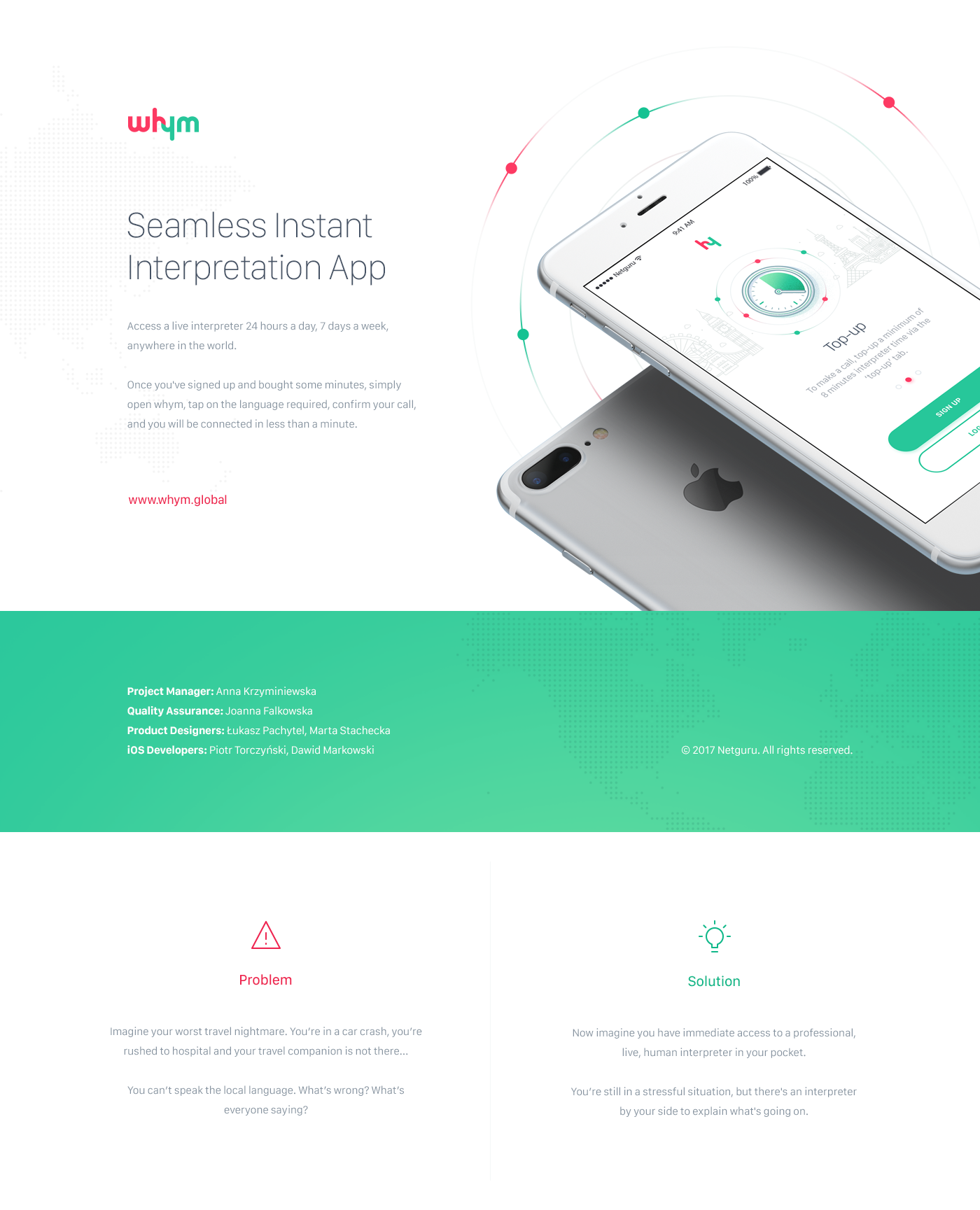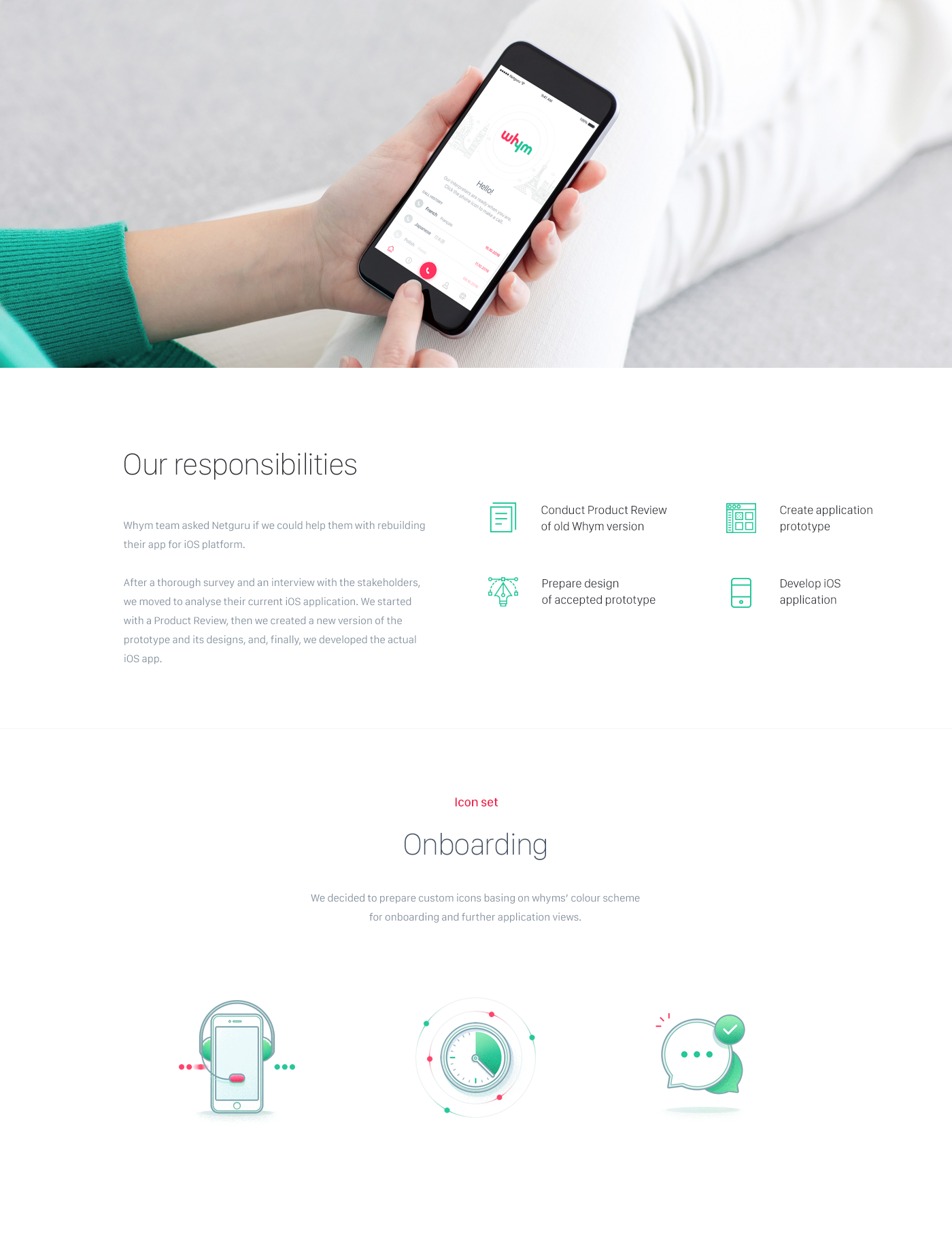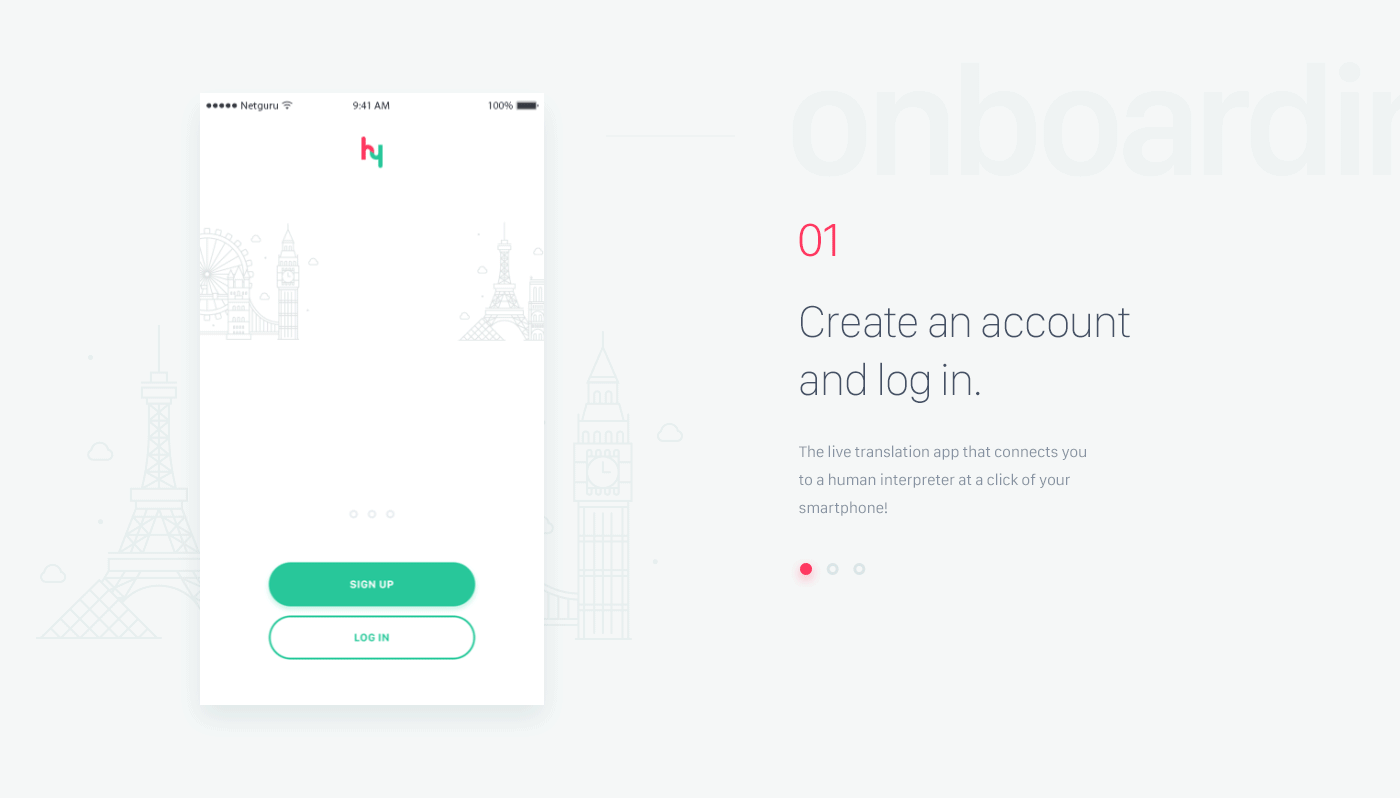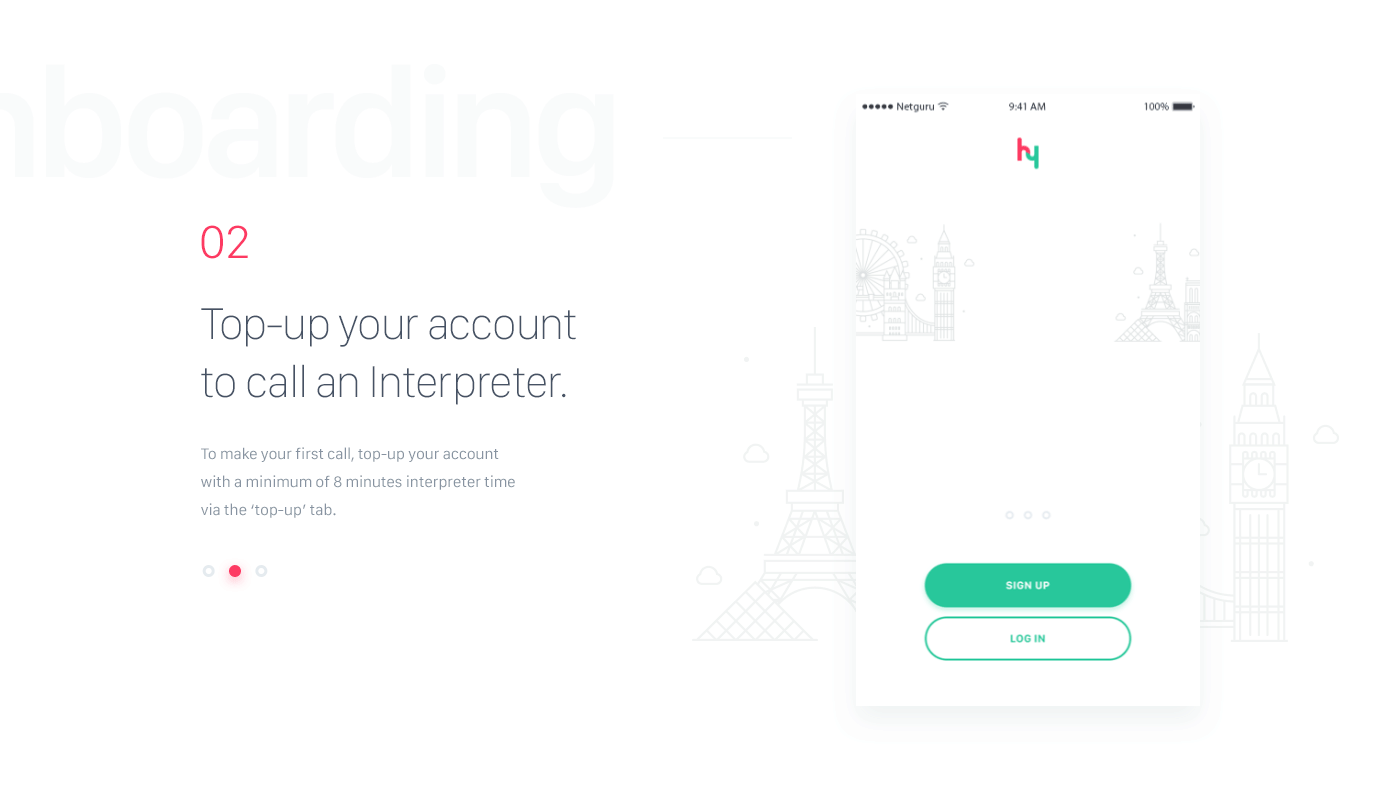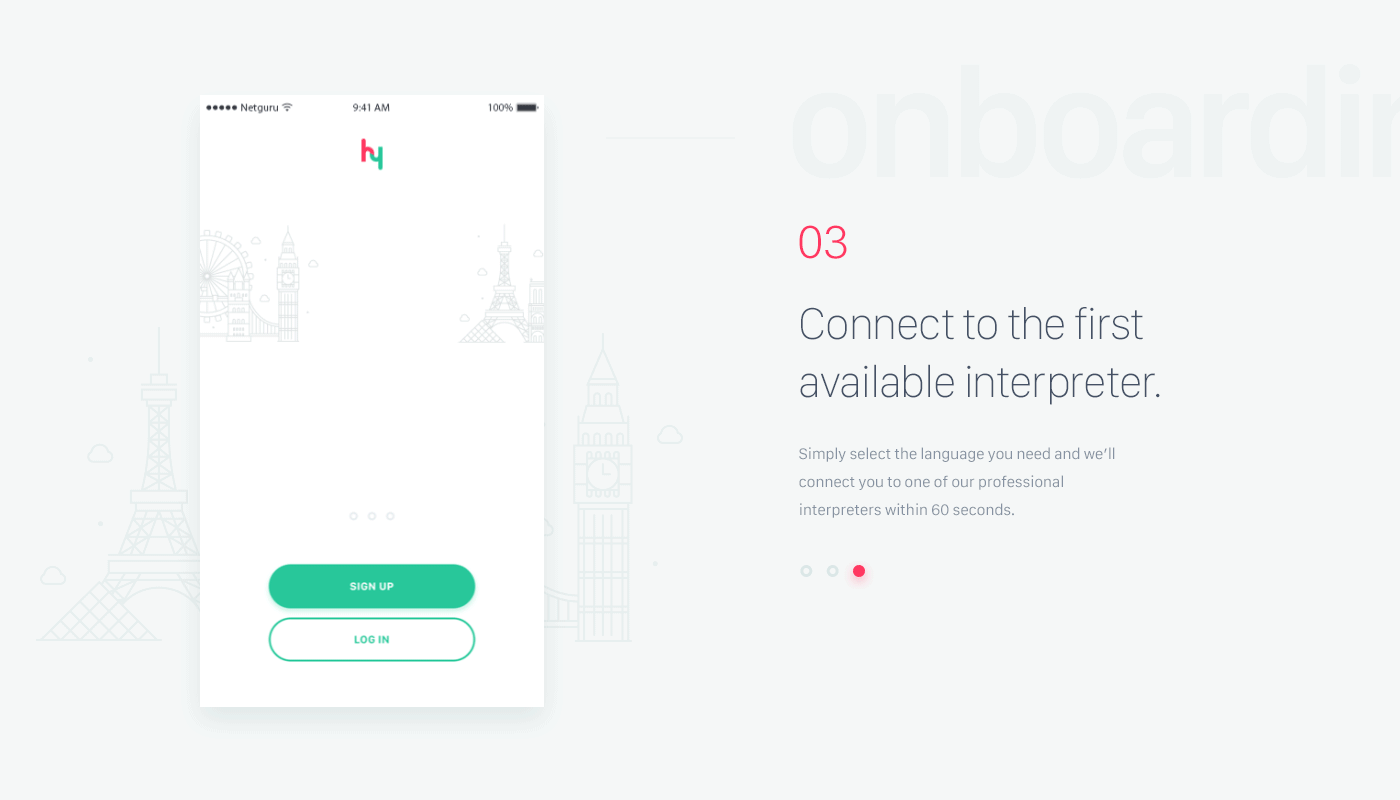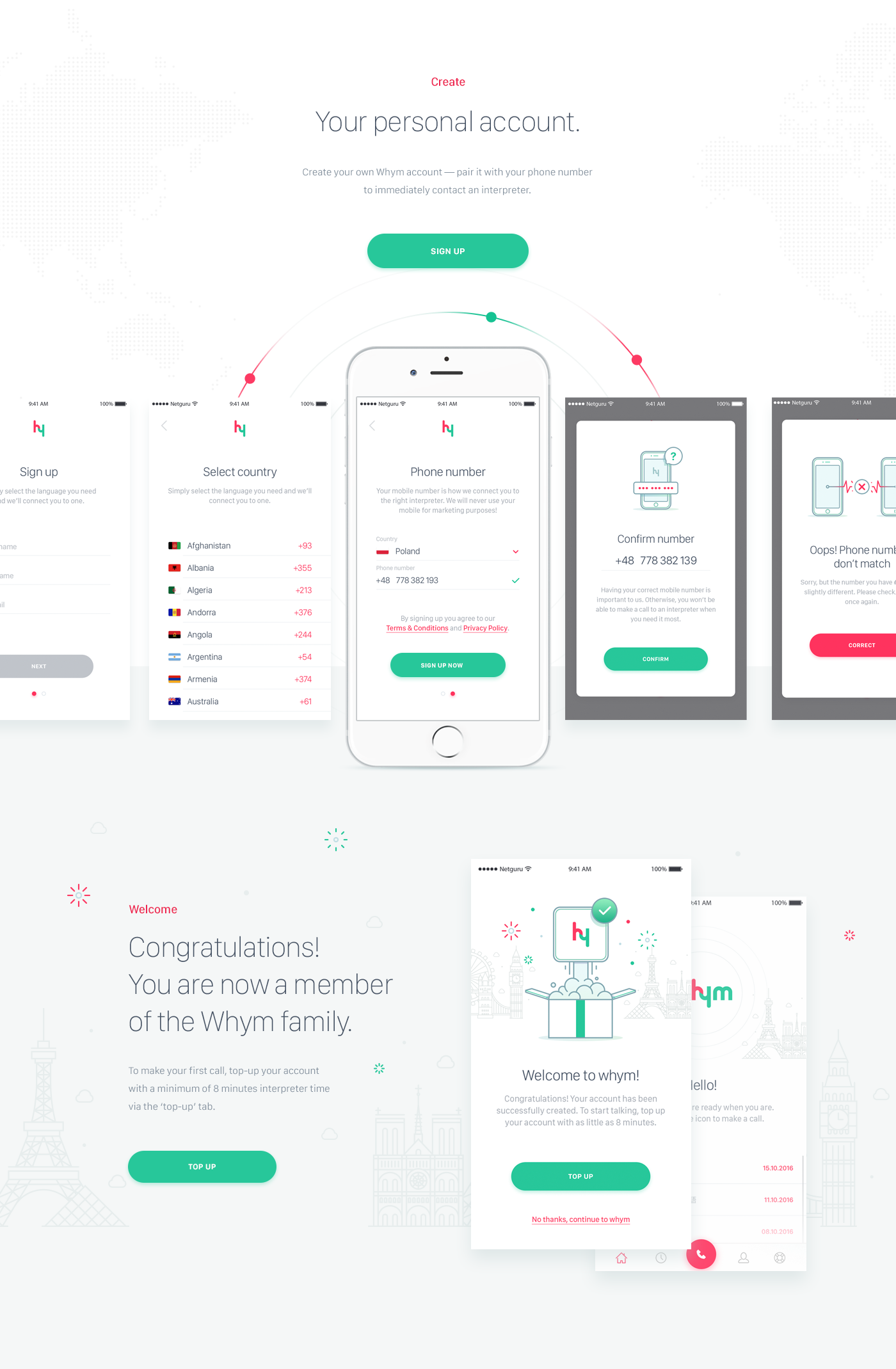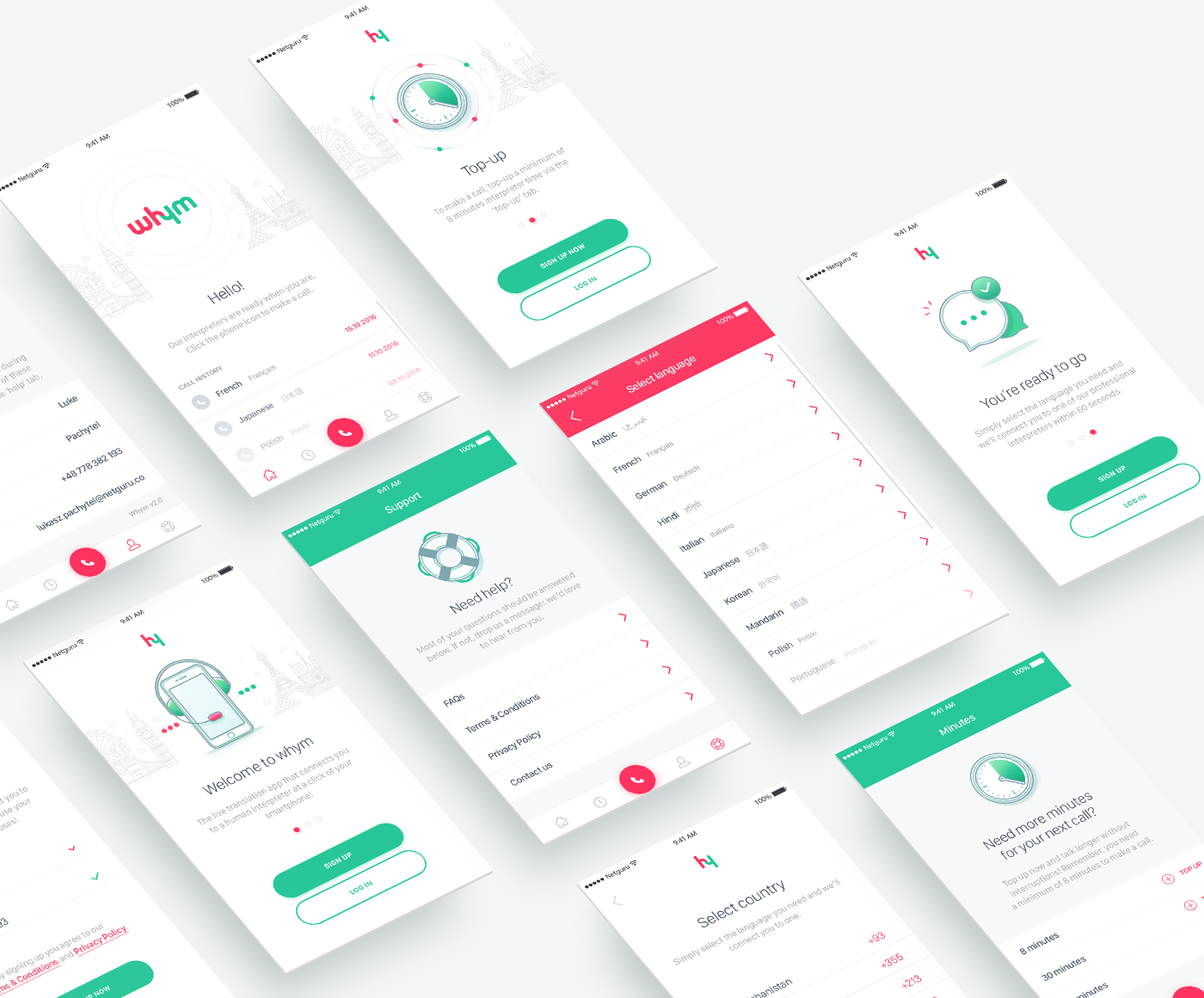February 15, 2017
The 15 Most Important Lessons I’ve Learned In Creative Work
Originally featured on Column Five.
If you’re in a field where either the people or the work you’re producing are labeled “creative,” you likely signed up to create meaningful, fulfilling experiences. And if you’re idealistic like me, you may even say you’re here to bring beauty into the world. Yet when it comes to creative work, we face the same occasional struggles: frustrating projects, tight timelines, vague asks, creative drain.
As Producer, then Senior Producer, Strategist, and now Director of Strategy at Column Five, I’ve faced these issues at many levels of our organization, both with our own team and with our partners. There is no magic fix for creative troubles, but over time I’ve learned a few lessons. Whether they were simple realizations or totally game-changing revelations, they’ve all helped me in one way or another. I think they can help you too.
If you want to improve the creative work you make and the way you work with others, here are 15 things that might help.
ON CLIENTS
1) RESPOND RIGHT NOW
This habit has the highest impact-to-effort ratio imaginable. That’s strategist speak for making a huge impact with very little effort.
I used to think I couldn’t respond to client emails until I had an exhaustive response to every item the client detailed. That was until a custom music vendor, Score A Score, showed me that quick replies as simple as “We’re on it” or “Thanks—tied up for a few hours but will respond in full” can be an incredibly valuable service tactic. (As a company policy, Score A Score’s CEO demands a 10-minute response time for every email from his staff.)
Knowing an email has been read and is being handled puts your partner’s mind at ease. (This type of swift communication also aligns with happiness expert Gretchen Rubin’s 1-minute rule. If something takes less than a minute, do it now.)
2) REMEMBER YOUR CLIENT IS NEVER WRONG—OR STUPID
Your creative success ultimately depends not on how much your client paid you but how well your creative work helped them achieve their goal.
Belittling a client’s opinion or lack of expertise never helped a team get a better creative result. The people you work with are very smart people. They could run circles around you in their field of expertise; they just need you to help communicate their vision. Approach the job as their partner and internal spokesperson. Own that role.
Beyond being a partner, you will sometimes need to represent your client or act as their surrogate when dealing with a subcontractor or vendor. Always make decisions that you believe will best benefit the client.
ON PROFESSIONAL GROWTH
3) RESPECT AND PROTECT EVERYBODY’S TIME—INCLUDING YOUR OWN
I originally wanted to phrase this as “be aggressively anti-meeting,” but let’s go with a more positive take. Don’t use meetings as a crutch. Meetings are only valuable when they leverage the collective contributions of valuable people. If you’re getting bombarded by meeting invites, make sure you’re clear on why your presence is necessary; if it’s not, decline it.
When you set up meetings, include only relevant stakeholders. Set objectives, then release people as soon as you address those designated objectives. Just because a meeting is scheduled for an hour doesn’t mean you have to fill time until then. (See more of our tips on how to run a meeting like a boss to save your team’s sanity.)
4) BET ON YOURSELF
The biggest mistakes I’ve made weren’t because I made a creative decision that didn’t pan out. They happened when I didn’t trust my own instincts—or kept quiet about them. Lo and behold, in those instances, the exact issues I’d wanted to raise ended up being irreversible flaws in the project.
Believe in your convictions. Be willing to gamble, put yourself out there to experiment, push boundaries, and even fail. Betting on yourself isn’t a risk-free path, but trusting your instincts—and being ready to deal with their outcomes—is an important way to grow and do better creative work.
5) NEVER CREATE UNNECESSARY WORK FOR YOUR CLIENT
This golden rule is pretty easy to stick to if you’re organized. Before you ask your client for their brand style guide or audience personas, be certain beyond a shadow of a doubt that you and your team don’t have that info already.
Triple- and quadruple-check your files to make sure you aren’t asking the client to do something they’re paying you to do. There’s no greater *facepalm* moment than when a client re-forwards you a previous email or refers you back to your own team member for info.
ON CREATIVITY
6) KEEP A LIST OF IDEAS
No matter how random or disconnected your ideas may be from the project at hand, record any idea that is interesting to you. These notes can be invaluable for preparing for a brainstorm, addressing wide-open creative opportunities, or referencing down the line when you’re stuck.
I personally use the Notes app on my iPhone. Plenty of my creative projects have started there, including everything I wanted to share in this blog.
7) EMBRACE BOREDOM
Profound creativity can come from moments of absolute mental void. While keeping busy is a motivator for me, moments of boredom are when my mind is free to reflect, humor itself, and explore. I used to commute over an hour each way to the office, and while I don’t miss that drive, I do miss the daily meditative time it afforded me.
ON PROBLEM-SOLVING
8) BE PERSISTENT IN UNDERSTANDING THE PROBLEM
Experienced creatives know there’s a visceral difference between ideating to solve a problem they understand versus one they don’t.
In creative work, we’re often asked to create a tangible piece of creative that connects to an intangible vision. A client might want you to make their brand “contemporary” or create an “emotional” video. But what does contemporary mean to them? What kind of emotion should your work elicit? If you want to find the right solution to a project, you need to know what problem you’re trying to solve.
Before you start on an endeavor, secure a firm understanding of the project and relationship goals. Call your contact if you need to iron out details or confirm what you’ve gathered. What is the vision? How does the client see it? The more assumptions you’re making, the less likely you’re aligned with your client.
Get to the why before you start worrying about the what. Remember: Even the most skilled dart-thrower can’t be effective if they don’t know the target.
9) KNOW YOUR VALUES
No matter your field of work, you have to know why you’re in it and what you want to do. Your mission and associated values will influence a lot of what you do—especially in cases where the answer isn’t cut and dried.
At our agency, we’re lucky to have a blueprint that influences our decision-making. It’s our Five Columns, the company values we use as our North Star:
When we have to make big decisions or approach a difficult conversation, these offer us inspiration and guidance. They not only make us better at what we do, they make us better people.
ON COLLABORATION
10) DEBRIEF OFTEN
We all want the same things: to make great creative work that our clients are happy with. But in the rush to complete a project, sometimes things go unsaid or accountability slips, which can lead to unhealthy communication and unsettled nerves within your team. Having a frank and honest discussion about these issues—after the fact—helps you improve and learn to work better.
I recommend these after every project, especially if that project experienced a hiccup. I’d also encourage you to be the first to welcome feedback. There is amazing and energizing power in creating a forum of open, honest team reflection. It’s the best way to make sure your next project has good vibes.
11) BE TRANSPARENT
A new mantra for our team has been to “act with positive intent and assume positive intent in others.” But we also need to be on the same page. For me, that comes down to transparency. When you are evasive or put up a facade, you breed distrust. Conversely, showing honesty and compassion will breed confidence. Most importantly, it’ll breed goodwill for when you do make a mistake—which, trust me, you will.
12) SPEAK AND LISTEN FROM THE HEART
Be authentic in the way you communicate, both in how you speak and listen. I used to have trouble reconciling “real” me with “work” me. But eventually the two met, and I was able to find my own professional voice. This helps me maintain genuine communication.
I’ve also learned to prioritize listening. It’s a key part of being a good collaborator—and human being. Give people your full attention to hear them out. Even if you disagree, acknowledge that you hear them, show appreciation for their thinking, and walk them through your thinking.
Create conversations instead of conflict. It’s likely you both want the same thing from a project. Strive to work from that common place.
If all else fails, I’ve found there’s a mystical power in going on a walk with someone.
ON PROJECT MANAGEMENT
13) TREAT EVERYONE LIKE A CLIENT
The creative community is a small world where relationships are everything. Our reputation directly affects who we get to collaborate with, which, in turn, impacts the quality of our work.
Pay people what they’re due when they’re due it, show kindness courageously, be an internal advocate for freelancers, and be a helping hand to your partners—no matter who the payer is. Understand that healthy long-term relationships are in the agency’s best interest.
14) LEARN THE 4 MOST POWERFUL WORDS
Risk. Expectations. Value. Confidence. These words will influence the success of all your creative endeavors.
Risk: What is likely to go wrong—budgeting, creative execution, legal reviews? When something makes you nervous, listen to that feeling. Knowing your risks only empowers you to manage a project better. Counter-balance your risk tolerance with the knowledge that great content practices don’t happen without experimentation.
Expectations: What is the vision and outcome your various collaborators anticipate? Undoubtedly, part of mastering life is having a good read on who expects what, and why. The idea of success is wholly dependent on what expectations preceded it.
Value: What project factors are unique or different, and how will that benefit your audience? Steering a project correctly requires that you have a great handle on what made the original concept valuable. Challenge yourself and your teammates by questioning the value of certain design elements, plot devices, or formats.
Confidence: How can you demonstrate optimism about your team’s ability to deliver on an idea? Using language such as “We’re confident in…” instead of “We think…” will help crystallize your confidence, and others will be more likely to listen.
15) CONTAIN THE SURPRISE FACTOR
As Jane Austen said, “Surprises are foolish things. The pleasure is not enhanced, and the inconvenience is often considerable.” I think it’s safe to say that in creative work, surprises are rarely fun.
How I’ve learned to minimize surprises in creative work:
- Engage your uncertainty: Get the answers you need from the people who can accurately give them. Does the designer feel confident in executing on this style? Is the developer on board with the required tech stack? Know where things are the most and least likely to blow up on you, and temper expectations accordingly.
- Identify the risk areas of a project early: 80% of a project’s outcomes are decided in the first 20% of the work. Work aggressively upfront to spot and resolve issues that may affect you down the line. This can mean everything from solid outlines and sketches to securing film permits and wardrobe approval.
- Think through every implication before you make a change: One project variable can greatly affect other variables. You don’t want solving one problem to create new, bigger problems. Assess the domino effect that new information or decisions may have, and get all parties on board beforehand.
Above all, stay open and agile. You’ll never be fully prepared for every situation that comes up. But that’s the fun part, right? Pack some of these tips in your toolbelt, and approach the unexpected challenges as opportunities—not natural disasters.
For more thoughts on creating great work, find out what 5 mistakes to avoid in content creation, learn how to work with these 4 creative types, and find out how to create a culture of content.
Source: Visual News
February 15, 2017
Facebook takes aim at Youtube with new standalone TV app
<b>Facebook is to roll out an app that lets users watch the platform’s video content on television.</b><p>The move could allow it to eventually better compete with the likes of YouTube and traditional television channels for advertising revenue.<p>Users with Apple TV, Amazon’s Fire TV and Samsung’s Smart TVs …
Source: CW’s Flipboard Feed
February 14, 2017
Sony made a PSVR music video you can move around in
When it comes to the immersive visuals virtual reality offers, the audio needs to be equally as compelling. That includes having the sound adapt to your movements as you navigate a scene or event. To show off what its PlayStation VR setup is capable of, Sony enlisted violinist Joshua Bell to record …
Source: CW’s Flipboard Feed
February 14, 2017
YouTube Cancels PewDiePie After Disney’s Maker Studios Dropped the Star Over Anti-Semitic Stunt
Disney and its subsidiary Maker Studios have dropped Swedish YouTube star Felix Kjellberg, AKA PewDiePie, from its roster one month after the gamer posted a video showing two men laughing as they held up a sign reading: “Death to all Jews.”
In a video from January 11, since removed, Kjellberg filmed his shocked reaction as the two men unfurled the sign, which he had paid them to do. The following week, Kjellberg posted an apology, repeating the hateful rhetoric and criticizing the media for not understanding that he was joking. In a January 22 video, also since removed, he reacts to a video of a Jesus character saying a popular alt-right trolling phrase, “Hitler did nothing wrong.” The Wall Street Journal has segments of the videos.
READ MORE: John Oliver Will Air Educational Ads During Morning News Shows Aimed At Donald Trump
Maker Studios released the following statement yesterday: “Although Felix has created a following by being provocative and irreverent, he clearly went too far in this case and the resulting videos are inappropriate. Maker Studios has made the decision to end our affiliation with him going forward.”
Following the announcement by maker Studios, Google-owned YouTube canceled plans for a second season of the reality series “Scare PewDiePie.” It has also removed Kjellberg’s PewDiePie channel from Google Preferred, its premium advertising tier, according to The Hollywood Reporter.
Since 2014, PewDiePie has been the most-viewed YouTube channel of all time. An early gaming channel, his 53 million subscribers tune in for his funny voices and provocative humor. Early in his career, he was criticized for making rape jokes in his videos. He signed with Maker Studios in 2012, one of the largest multi-channel networks, or MCNs. (An MCN manages channels for digital content creators in exchange for a share of the revenue.) The Walt Disney Company bought Maker Studios in 2014 for $500 million.
Kjellberg released a statement on Tumblr defending his recent actions: “I was trying to show how crazy the modern world is, specifically some of the services available online. I think it’s important to say something and I want to make one thing clear: I am in no way supporting any kind of hateful attitudes.”
With such a robust following, it’s difficult to predict how the separation will affect Kjellberg’s popularity or revenue stream. YouTubers make money through advertising and brand partnerships, which an MCN like Maker would help facilitate. However, PewDiePie will still be able to run his YouTube channel, he just lost his preferred status and his original show, as well as the contract with Maker Studios.
At a time when hate speech is seeping into media from the highest reaches of government, Disney’s decision to sever ties with such a mega-star speaks volumes. So does the fact that it took them a month to do it.
February 14, 11:19 am: Updated to include YouTube’s decision to cut ties with Kjellberg.
Stay on top of the latest breaking film and TV news! Sign up for our Email Newsletters here.
Source: IndieWire Digital TV
February 14, 2017
Product Design: Whym – Seamless Instant Interpretation App
Product Design: Whym – Seamless Instant Interpretation App
Whym – Seamless Instant Interpretation App is a product design project shared by the Netguru Team on their Behance profile. As the name suggest the idea is simple, you have an app that provided you access to a live interpreter 24 hours a day, 7 days a week. Simple ideas tend to be the most difficult to execute well but, visually at least (I have not had time to download and play with it yet) it looks quite beautiful. This project covers some of the main user journeys like: onboarding, call and connect with an interpreter and purchase more minutes. It is a quite good example of product design presentation.
Use case
Imagine your worst travel nightmare. You’re in a car crash; you’re rushed to hospital; your travel companion has been arrested by the police. Then imagine you can’t speak the local language. You can’t understand what’s being said; you can’t get people to understand you. What’s wrong? What’s everyone saying?
Now imagine you have immediate access to a professional,live, human interpreter in your pocket. You’re still in a stressful situation, but there’s an interpreter by your side to explain what’s going on.
Product design solution
About Netguru
Netguru is one of Europe’s fastest growing mobile and web development groups. We’ve helped partners scale existing projects and build MVPs. For more information check out: http://netguru.co/
abduzeedo
Feb 14, 2017
Source: Abduzeedo UI/UX
February 13, 2017
Motion Design for UI by Michal Sambora
Motion Design for UI by Michal Sambora
There’s a clear shift or I would say evolution of interface design that relies more in motion design to make it easier for people to understand how to use the application. In addition to that motion design can enhance the visual experience tremendously. Michal Sambora has great examples of subtle and not so subtle animations to illustrate that. There are some quite interesting experiments, especially the real weather project that uses 3D to create dramatic icons for a weather app. Some of the projects seem to be experimental only, but even if they are not based on real implementations, they are still worth checking them out.
Michal Sambora is a interface designer from Cracow, Poland. For more information check out his Dribbble profile at https://dribbble.com/samborek
Motion design for UI
abduzeedo
Feb 13, 2017
Source: Abduzeedo UI/UX
February 12, 2017
Tim Cook sees augmented reality rivaling iPhone’s impact
Apple’s CEO says the technology is ‘huge,’ with the potential to improve people’s lives.<p>For Apple, augmented reality is the next big thing.<p>How big? How about as big as the iPhone?<p>Tim Cook has expressed his interest in AR before, but now the Apple CEO is likening the technology to the revolutionary …
Source: CW’s Flipboard Feed
February 12, 2017
How to Crop in After Effects
It’s super easy to crop in After Effects. This fast, helpful video tutorial will show you everything you need to know!<p><b>Cropping in After Effects</b> is …
Source: CW’s Flipboard Feed
February 12, 2017
Berlinale 2017: First Looks Released for Bel Powley–Starring Drama and Lucky McKee’s Latest
From the Berlin Film Festival comes the news that two young actors who made big splashes a few years back are set to star in new films: Bel Powley (“Diary of a Teenage Girl”) will headline Marius A. Markevicius’ “Ashes in the Snow,” while Ellar Coltrane of “Boyhood” is co-starring alongside John Cusack in Lucky McKee’s thriller “Misfortune.” Avail yourself of a photo from the latter below.
Here’s the synopsis for “Ashes in the Snow”: “Based on the internationally best-selling novel ‘Between Shades of Gray’ by Ruta Sepetys, ‘Ashes in the Snow’ introduces us to Lina, a sixteen-year-old budding artist in 1941 Lithuania, who along with her mother and young brother are deported by the Soviets to a Siberian work camp. Faced with years of hard labor in an unforgiving climate, Lina finds that her self-expression through art and newfound love with a fellow prisoner are her key to survival.”
And “Misfortune”: “Sharp, quick-witted businessman Miller (Cusack) left everything behind, including his family, to start a new life after embezzling a client’s money. All had been going according to plan until he becomes separated from his cash in the middle of the wilderness. Three young friends happen upon the lost fortune, and a desperate and violent Miller will do anything to get his money back.”
READ MORE: ‘Barrage’ Review: Isabelle Huppert Acts Against Her Daughter In Laura Schroeder’s Movingly Delicate Family Drama — Berlinale 2017
Lisa Loven Kongsli (“Wonder Woman,” “Force Majeure”) and Tom Sweet (“The Childhood of a Leader”) co-star in “Ashes in the Snow,” while Willa Fitzgerald (“Scream: The TV Series”) and “Jacob Artist (“American Horror Story”) are featured in “Misfortune.” Both films are currently in post-production.

Ellar Coltrane and John Cusack in “Misfortune”
Stay on top of the latest breaking film and TV news! Sign up for our Email Newsletters here.
Source: IndieWire film
February 12, 2017
‘Hidden Figures’ and ‘black-ish’ Win Big at 48th NAACP Image Awards
Taraji P. Henson took home two prizes from the 48th NAACP Image Awards, which took place in Los Angeles night: Outstanding Actress in a Drama Series (“Empire”) and Outstanding Actress in in a Motion Picture (“,” which also won Outstanding Motion Picture).
READ MORE: Why ‘Hidden Figures’ Is the Inspiring Awards Season Contender We Need Now — Consider This
Anthony Anderson, who hosted the ceremony at the Pasadena Civic Auditorium, earned a prize of his own for starring in “black-ish”; his co-star Tracee Ellis Ross repeated her Golden Globes victory, and the show itself won Outstanding Comedy Series. Full list of winners below.

Tracee Ellis Ross in “Black-ish.”
ABC/Kelsey McNeal
Outstanding Comedy Series: “`black-ish”
Outstanding Actor in a Comedy Series: Anthony Anderson, “`black-ish”
Outstanding Actress in a Comedy Series: Tracee Ellis Ross, “`black-ish”
Outstanding Drama Series: “Queen Sugar”
Outstanding Actor in a Drama Series: Sterling K. Brown, “This Is Us”
Outstanding Actress in a Drama Series: Taraji P. Henson, “Empire”

Denzel Washington in “Fences”
David Lee/Paramount Pictures/REX/Shutterstock
Outstanding Motion Picture: “Hidden Figures”
Outstanding Actor in a Motion Picture: Denzel Washington, “Fences”
Outstanding Actress in a Motion Picture: Taraji P. Henson, “Hidden Figures”
Entertainer of the Year: Dwayne Johnson
Stay on top of the latest breaking film and TV news! Sign up for our Email Newsletters here.
Source: IndieWire film
